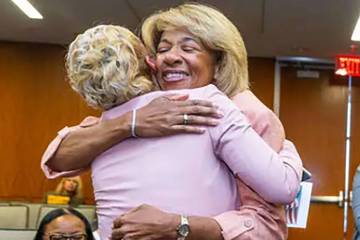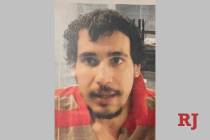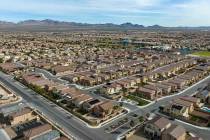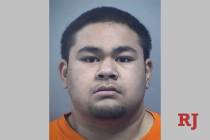Las Vegas’ Civil Rights Film Fest highlights modern activism
Nedra Cooper was a 17-year-old “military brat” and a senior in high school when she settled in the Las Vegas Valley in 1971, after traveling with her father from base to base.
“I remember marching with the NAACP and other black organizations on the Strip about the disparity in jobs and disparity in treatment for blacks when I got here,” Cooper said. “There’s definitely been growth since then. A lot of growth on the Strip in terms of employment.”
Cooper is the chairwoman of the Civil Rights Film Fest, set for noon Saturday at West Las Vegas Library. It includes panel discussions, participatory audience segments and two films focused on women’s achievements. Cooper expects about 75 people will attend.
“We tried to pick films that have things to do with issues that are going on in society today,” Cooper said. “We look for the ones that have some type of activism attached to it. It’s important that our youth kind of have an understanding of the road that was paved. A lot of times if you talk to millennials, they’ll make you believe discrimination never existed — mainly because they’ve never experienced it. It still exists, but now it has a different form. My point was to help people see where they’re going by knowing where they came from.”
Las Vegas in the early 1950s and ’60s could be an inhospitable place blacks, said Claytee White, director of oral histories at UNLV. She remembers the NAACP asking its branches across the country to ramp up their activities calling for integration in the ’60s. Back then, she said, blacks weren’t allowed to enter hotels and casinos in Las Vegas through the front door.
“Even entertainers were forced to enter through the back,” she said. “So artists like Sammy Davis Jr., Nat King Cole, Lena Horne, Pearl Bailey — all of the big names from that time had to enter the back door of the casinos, perform and leave by the back door.”
In March 1960, Dr. James McMillan, president of the Las Vegas chapter of the NAACP at the time, sent a letter to then-Mayor Oran K. Gragson giving him 30 days to desegregate the city. If he did not, the chapter planned a peaceful protest on the Strip calling for blacks to be allowed to enter casinos through the front door.
“There was a meeting that Saturday morning, March 26,” White said. “It was the headlines of the Sun newspaper. The photo on it shows the leaders of the city sitting around a table in the Moulin Rouge. The police chief, the mayor, the governor of the state, publisher of the Sun newspaper, black leaders were all there. They made an agreement that evening that hotels would grant African-Americans access to public accomodations. On March 26, 1960, integration took place in Las Vegas.”
The meeting and its results became known as the Moulin Rouge Agreement, which was only verbal. It gave blacks access to public accommodations, but not jobs on the Strip.
It wasn’t until 1971 — the year Cooper moved to Las Vegas — that a “consent deal” was passed so blacks could be employed on the Strip, White said.
Cooper said that the city is growing and becoming more aware, and that sharing the histories of all minority groups and stressing civil rights for everyone is important to continue that growth.
“Each person just has to do their part, wherever their passion lies,” Cooper said. “My passion lies with civil rights.”
Contact Mia Sims at msims@
Civil Rights Film Fest 2019
What: 12th annual festival showing films on focused on civil rights
When: 12-4 p.m. Saturday
Where: West Las Vegas Library, 951 W. Lake Mead Blvd.
Featured films: "Alice Walker: Beauty in Truth," about a woman's journey from the cotton fields of Georgia to winning a Pulitzer Prize for her novel "The Color Purple," and "Don't Tell Anyone," about undocumented immigrant, activist and sexual assault victim Angy Rivera
Co-sponsor: Las Vegas Alumni Chapter of Delta Sigma Theta Sorority. It originated as an idea of the sorority's political awareness and involvement committee.
More information: 702-507-3989
































